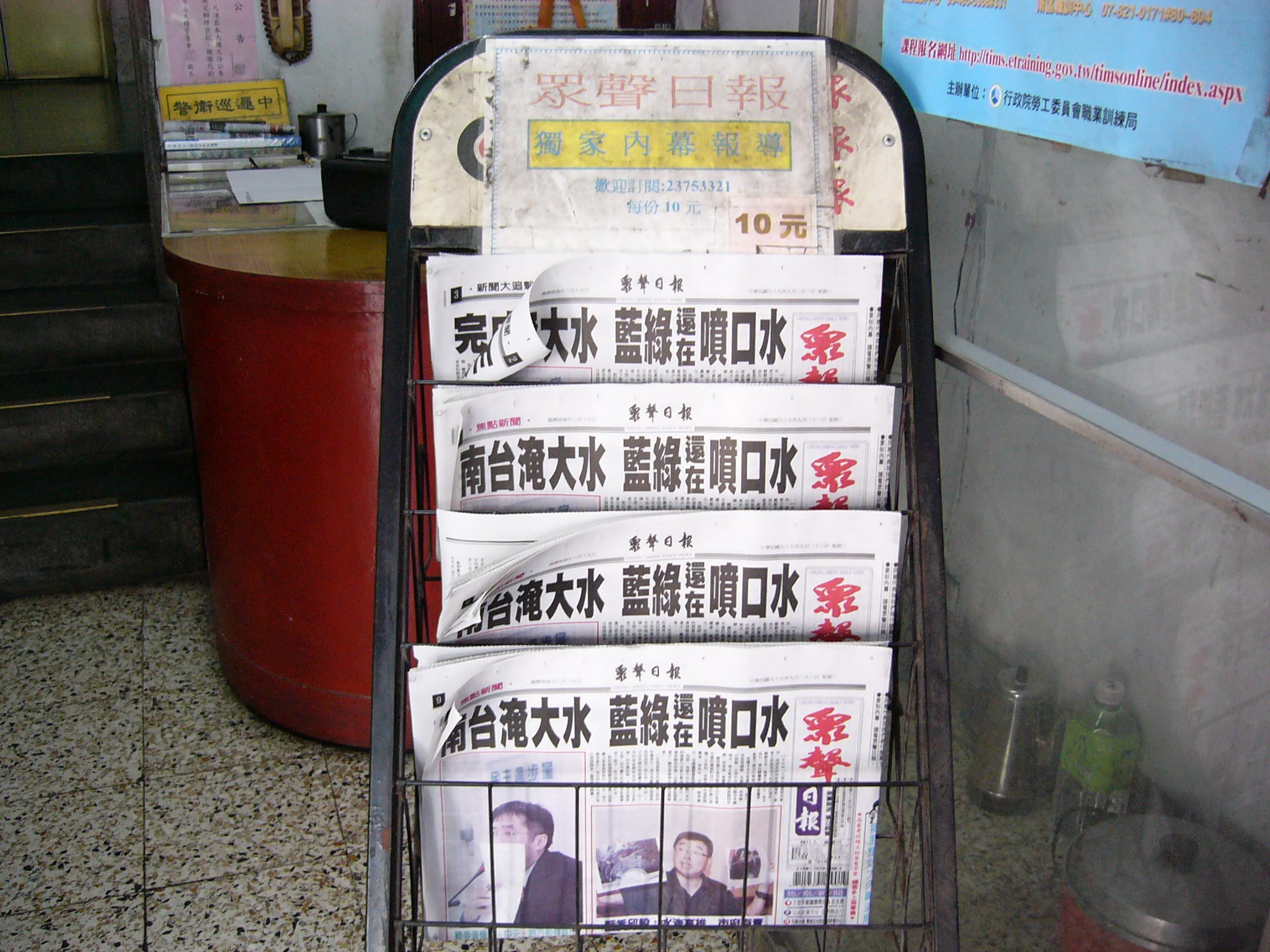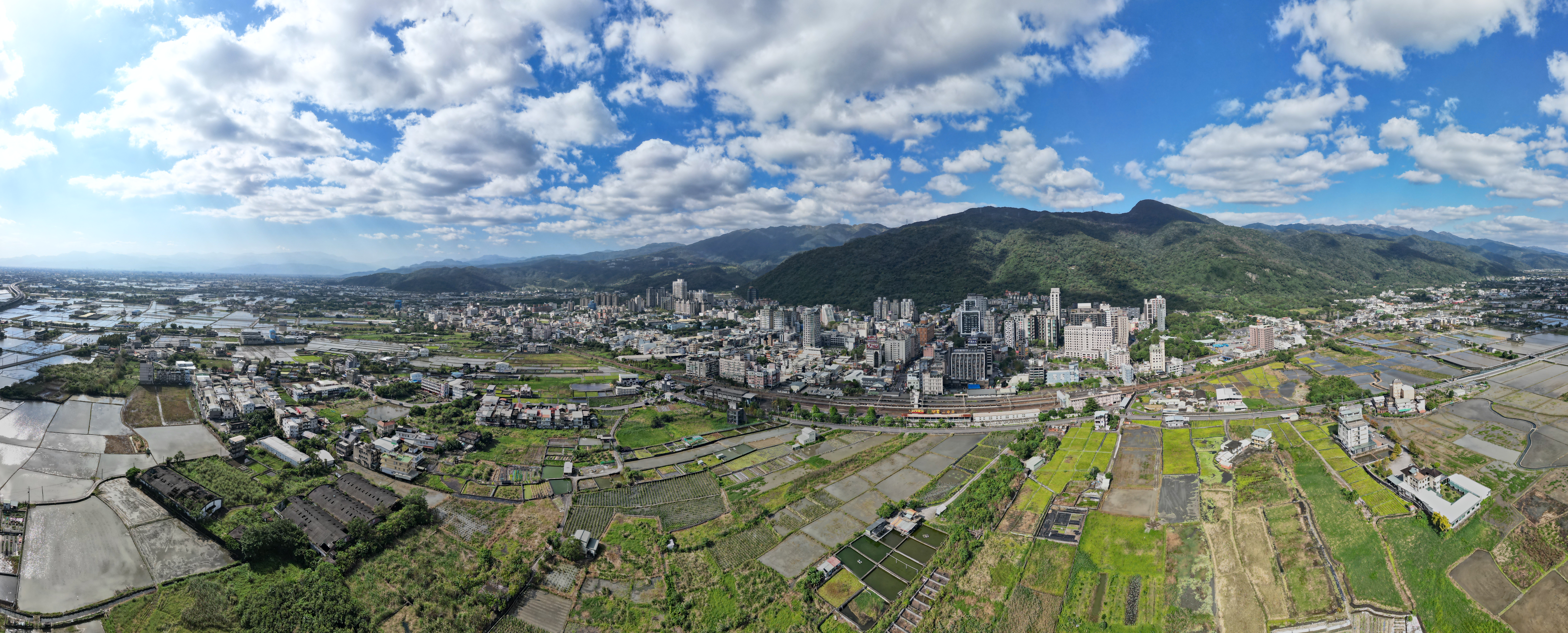|
Taipei Broadcasting Station
Taipei Broadcasting Station or Radio Taipei (TBS; ) is a government owned radio station in the Republic of China. It has been in operation since 7 July 1961 under the direction of the Department of Information and Tourism, Taipei City Government. It is located in Taipei City, Taiwan directly across from the Taipei Fine Arts Museum. History In 1961, the station's original purpose was City Civil Defense Radio (民防廣播電台) broadcasting under the control of the Taiwan Garrison Command to coordinate air defense against a People's Liberation Army attack. Later, in 1972 the station was renamed Taipei City Civil Defense Radio (台北市民防廣播電台) and came under control of the Taipei City Government. In 1977, Taipei City Government renamed the station Taipei City Government Radio (台北市市政廣播電台). Organizational structure * Programming Section * Engineering Section * General Affairs Section * Accounting Office * Personnel Office Listening frequency The sta ... [...More Info...] [...Related Items...] OR: [Wikipedia] [Google] [Baidu] |
Zhongshan District, Taipei
Zhongshan District ( Chinese: 中山區) is an administrative district of Taipei City, named after Sun Yat-sen, better known in Chinese as "Sun Zhongshan". Economy In the 1970s, the district was recognized as the center of the city's tourist industry, with large hotels and international restaurants. The interest from tourists allowed the district to develop as a center of international business. In recent decades, the district's economy and its population have both contracted, due in part to the decentralisation of industrial and manufacturing activities. Parts of Taipei's "financial core" (that once centred on the Zhongshan District) have been moved to other districts.''Globalizing Taipei: The Political Economy Of Spatial Development'' by R. Yin-wang Kwok ( |
Hsinchu
Hsinchu (, Chinese: 新竹, Pinyin: ''Xīnzhú'', Wade–Giles: ''Hsin¹-chu²'') is a city located in northwestern Taiwan. It is the most populous city in Taiwan Province not among the special municipalities, with estimated 450,655 inhabitants. Hsinchu is a coastal city bordering the Taiwan Strait to the west, Hsinchu County to the north and east, and Miaoli County to the south. Nicknamed the ''Windy City'' for its strong northeastern monsoon during the autumn and winter seasons. The area was originally settled by the Austronesian Taiwanese indigenous peoples, with the settlement being named "Tek-kham" by the Hoklo immigrants. The city was founded by Han Chinese settlers in 1711, and renamed to its current form in 1878. During the Japanese Era, the city was the seat of Shinchiku Prefecture, named after the city. The prefecture encompassed present-day Hsinchu City and County, as well as entire Taoyuan and Miaoli. After the ROC rule in 1945, the urban area of Hsinchu was ... [...More Info...] [...Related Items...] OR: [Wikipedia] [Google] [Baidu] |
Mass Media In Taipei
Mass is an intrinsic property of a body. It was traditionally believed to be related to the quantity of matter in a physical body, until the discovery of the atom and particle physics. It was found that different atoms and different elementary particles, theoretically with the same amount of matter, have nonetheless different masses. Mass in modern physics has multiple definitions which are conceptually distinct, but physically equivalent. Mass can be experimentally defined as a measure of the body's inertia, meaning the resistance to acceleration (change of velocity) when a net force is applied. The object's mass also determines the strength of its gravitational attraction to other bodies. The SI base unit of mass is the kilogram (kg). In physics, mass is not the same as weight, even though mass is often determined by measuring the object's weight using a spring scale, rather than balance scale comparing it directly with known masses. An object on the Moon would ... [...More Info...] [...Related Items...] OR: [Wikipedia] [Google] [Baidu] |
Radio Stations Established In 1961
Radio is the technology of signaling and communicating using radio waves. Radio waves are electromagnetic waves of frequency between 30 hertz (Hz) and 300 gigahertz (GHz). They are generated by an electronic device called a transmitter connected to an antenna which radiates the waves, and received by another antenna connected to a radio receiver. Radio is very widely used in modern technology, in radio communication, radar, radio navigation, remote control, remote sensing, and other applications. In radio communication, used in radio and television broadcasting, cell phones, two-way radios, wireless networking, and satellite communication, among numerous other uses, radio waves are used to carry information across space from a transmitter to a receiver, by modulating the radio signal (impressing an information signal on the radio wave by varying some aspect of the wave) in the transmitter. In radar, used to locate and track objects like aircraft, ships, spacecraft a ... [...More Info...] [...Related Items...] OR: [Wikipedia] [Google] [Baidu] |
Radio Stations In Taiwan
The mass media in Taiwan is considered to be one of the freest and most competitive in Asia. Cable TV usage is high (around 80%) and there is also a wide selection of newspapers available covering most political viewpoints. Taiwan's media history While Taiwan's media freedom may rank among the top few nations in Asia today, its progress to its current state of vibrancy was not without a struggle. The Japanese occupation of Taiwan from 1895 to 1945 did not slow down the pace of economic modernisation on the island; the Kuomintang (KMT, Nationalist Party) also built on the successes of its predecessors to modernize and this provided the basis for its mass media industry to develop. However, KMT's pursuit of economic progress and democratic ideals did not automatically mean that Taiwan's media could fulfill its role as the fourth estate of democracy, as a check on the government. The martial law era media was kept on a tight leash and the explicit prohibition from enquiring about then ... [...More Info...] [...Related Items...] OR: [Wikipedia] [Google] [Baidu] |
Chinese-language Radio Stations
Chinese (, especially when referring to written Chinese) is a group of languages spoken natively by the ethnic Han Chinese majority and many minority ethnic groups in Greater China. About 1.3 billion people (or approximately 16% of the world's population) speak a variety of Chinese as their first language. Chinese languages form the Sinitic branch of the Sino-Tibetan languages family. The spoken varieties of Chinese are usually considered by native speakers to be variants of a single language. However, their lack of mutual intelligibility means they are sometimes considered separate languages in a family. Investigation of the historical relationships among the varieties of Chinese is ongoing. Currently, most classifications posit 7 to 13 main regional groups based on phonetic developments from Middle Chinese, of which the most spoken by far is Mandarin (with about 800 million speakers, or 66%), followed by Min (75 million, e.g. Southern Min), Wu (74 million, e.g. Shangha ... [...More Info...] [...Related Items...] OR: [Wikipedia] [Google] [Baidu] |
Media In Taiwan
The mass media in Taiwan is considered to be one of the freest and most competitive in Asia. Cable TV usage is high (around 80%) and there is also a wide selection of newspapers available covering most political viewpoints. Taiwan's media history While Taiwan's media freedom may rank among the top few nations in Asia today, its progress to its current state of vibrancy was not without a struggle. The Japanese occupation of Taiwan from 1895 to 1945 did not slow down the pace of economic modernisation on the island; the Kuomintang (KMT, Nationalist Party) also built on the successes of its predecessors to modernize and this provided the basis for its mass media industry to develop. However, KMT's pursuit of economic progress and democratic ideals did not automatically mean that Taiwan's media could fulfill its role as the fourth estate of democracy, as a check on the government. The martial law era media was kept on a tight leash and the explicit prohibition from enquiring about then ... [...More Info...] [...Related Items...] OR: [Wikipedia] [Google] [Baidu] |
Yilan County, Taiwan
Yilan County, alternately spelled I-lan, is a county in northeastern Taiwan, Republic of China. Name The name ''Yilan'' derives from the indigenous Kavalan people. Other former names in reference to this area in the Yilan Plain include ''Kabalan'', ''Kavalan'', ''Kavaland'', ''kap-a-lan'', ''Yiland'' and ''Gilan''. Before 2009, the county's official name was transliterated as Ilan. History Early history Since early ages, many people have traveled from far places to Yilan. Indigenous tribes that have settled in Yilan are Kavalan people and Atayal people. The Kavalan people came by the sea and lived by the river at Yilan Plain since around 1,000 years ago. They mostly speak the Austronesian languages. Their settlements consisted of small villages along rivers with around 40-50 communities scattered around the area with a total population of approximately 10,000 people. The Atayal people came by crossing the Xiyuan Pass and settled in the mountain areas. The Ataya ... [...More Info...] [...Related Items...] OR: [Wikipedia] [Google] [Baidu] |
Keelung
Keelung () or Jilong () (; Hokkien Pe̍h-ōe-jī, POJ: '), officially known as Keelung City, is a major port Provincial city (Taiwan), city situated in the northeastern part of Taiwan. The city is a part of the Taipei–Keelung metropolitan area, along with its neighbors, New Taipei City and Taipei, respectively. Nicknamed the ''Rainy Port'' for its frequent rain and maritime role, the city is Taiwan's second largest seaport (after Kaohsiung). The city was founded by the Spanish Empire in 1626, then called Santisima Trinidad (Taiwan), La Santisima Trinidad. Name According to early Chinese accounts, this northern coastal area was originally called ''Pak-kang'' (). By the early 20th century, the city was known to the Western world as Kelung, as well as the variants ''Kiloung'', ''Kilang'' and ''Keelung''. In his 1903 general history of Taiwan, US Consul to Formosa (1898–1904) James W. Davidson related that "Kelung" was among the few well-known names, thus warranting no alt ... [...More Info...] [...Related Items...] OR: [Wikipedia] [Google] [Baidu] |
Taoyuan City
Taoyuan () is a special municipality of the Republic of China (Taiwan) located in northwestern Taiwan, neighboring New Taipei City to the north-east, Yilan County to the south-east, and Hsinchu County to the south-west. Taoyuan District is the seat of the municipal government and which, along with Zhongli District, forms a large metropolitan area. Taoyuan developed from a satellite city of Taipei metropolitan area to become the fourth-largest metropolitan area, and fifth-largest populated city in Taiwan. "Taoyuan" literally means "peach garden" in Chinese, since the area used to have many peach trees. Formerly a county, Taoyuan became the most recent special municipality in 2014. Taoyuan City is home to many industrial parks and tech company headquarters. Due to the city's proximity to Taipei, and the lower cost of living, Taoyuan has had the fastest population growth of any city in Taiwan in recent decades. The city is also home to 116,000 foreign workers, wi ... [...More Info...] [...Related Items...] OR: [Wikipedia] [Google] [Baidu] |
People's Liberation Army
The People's Liberation Army (PLA) is the principal military force of the People's Republic of China and the armed wing of the Chinese Communist Party (CCP). The PLA consists of five service branches: the Ground Force, Navy, Air Force, Rocket Force, and Strategic Support Force. It is under the leadership of the Central Military Commission (CMC) with its chairman as commander-in-chief. The PLA can trace its origins during the Republican Era to the left-wing units of the National Revolutionary Army (NRA) of the Kuomintang (KMT) when they broke away on 1 August 1927 in an uprising against the nationalist government as the Chinese Red Army before being reintegrated into the NRA as units of New Fourth Army and Eighth Route Army during the Second Sino-Japanese War. The two NRA communist units were reconstituted into the PLA on 10 October 1947. Today, the majority of military units around the country are assigned to one of five theater commands by geographical location. ... [...More Info...] [...Related Items...] OR: [Wikipedia] [Google] [Baidu] |







